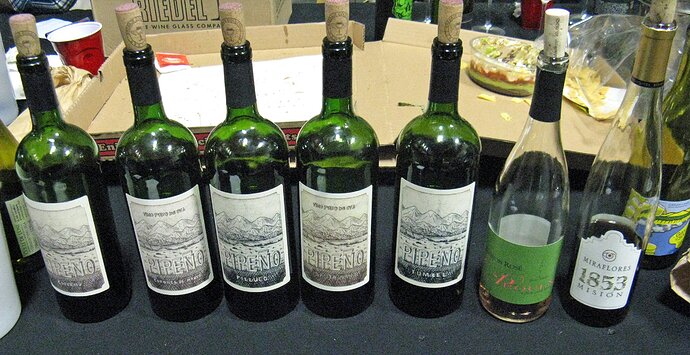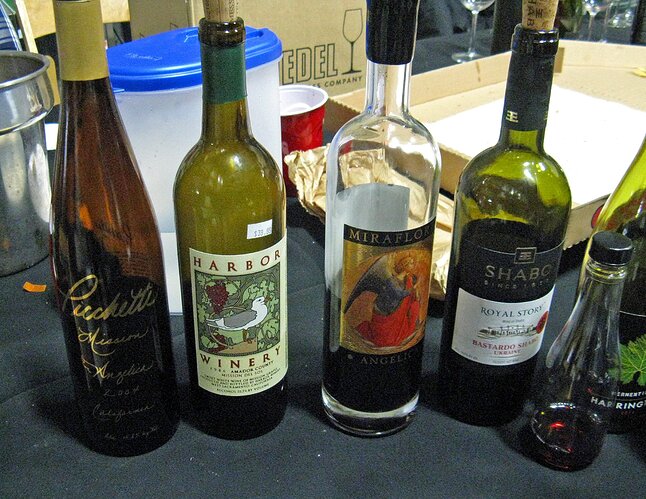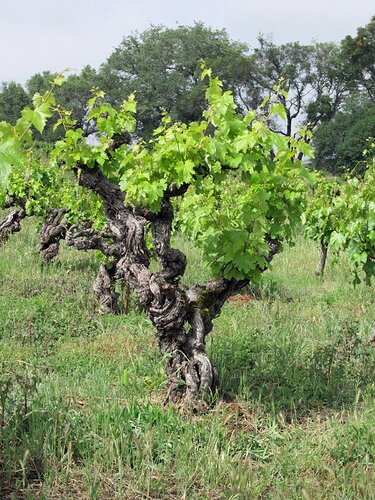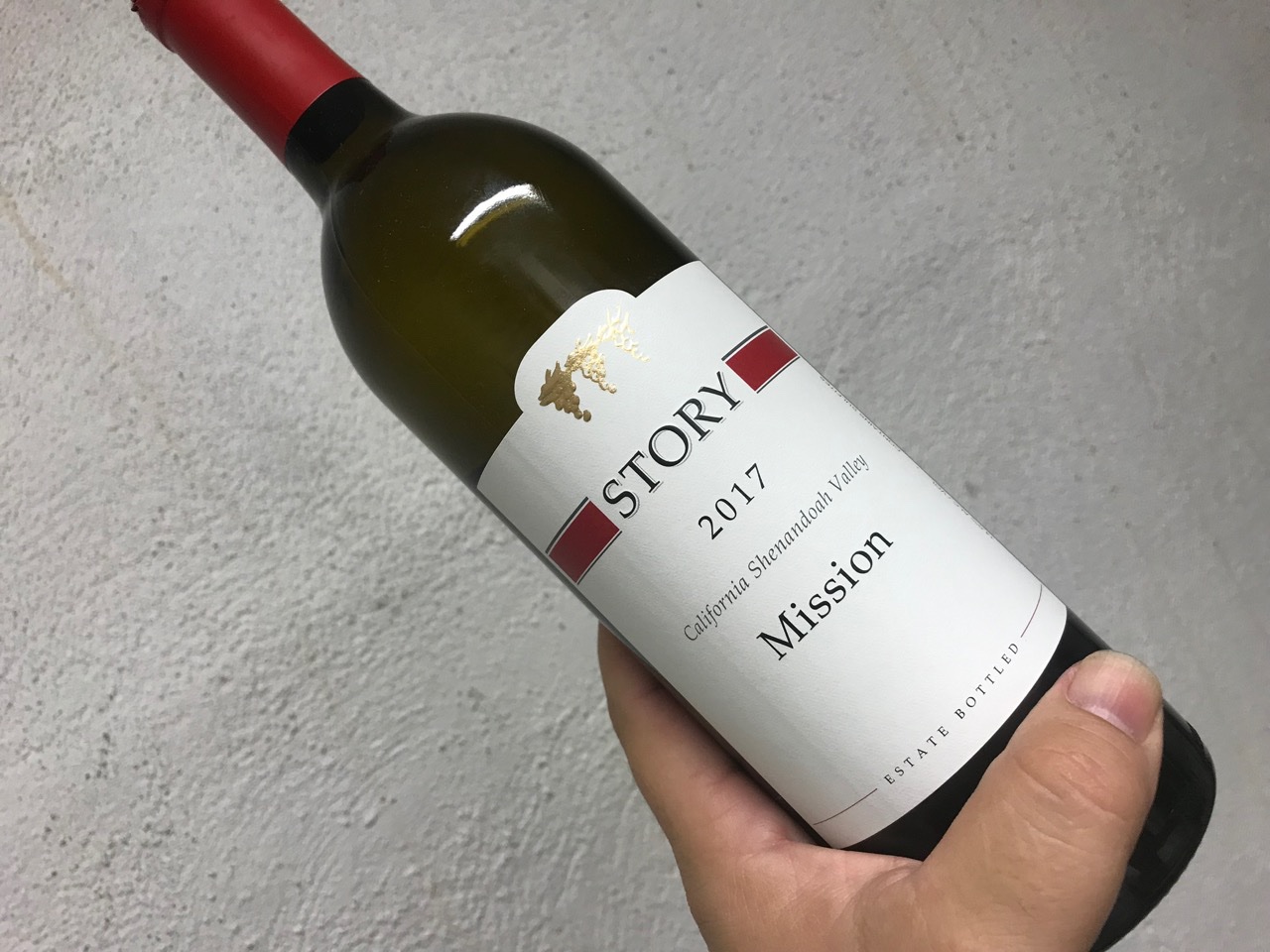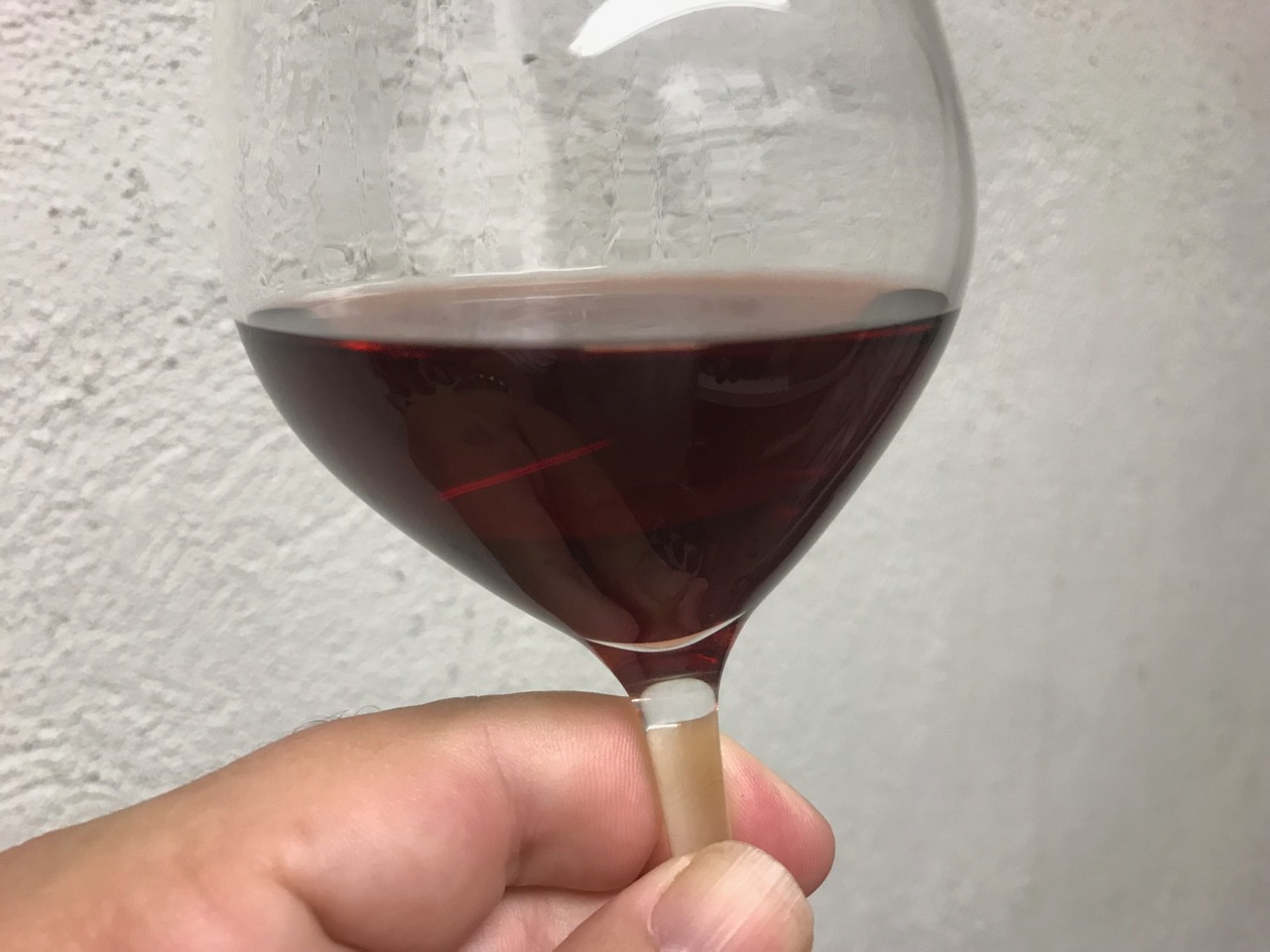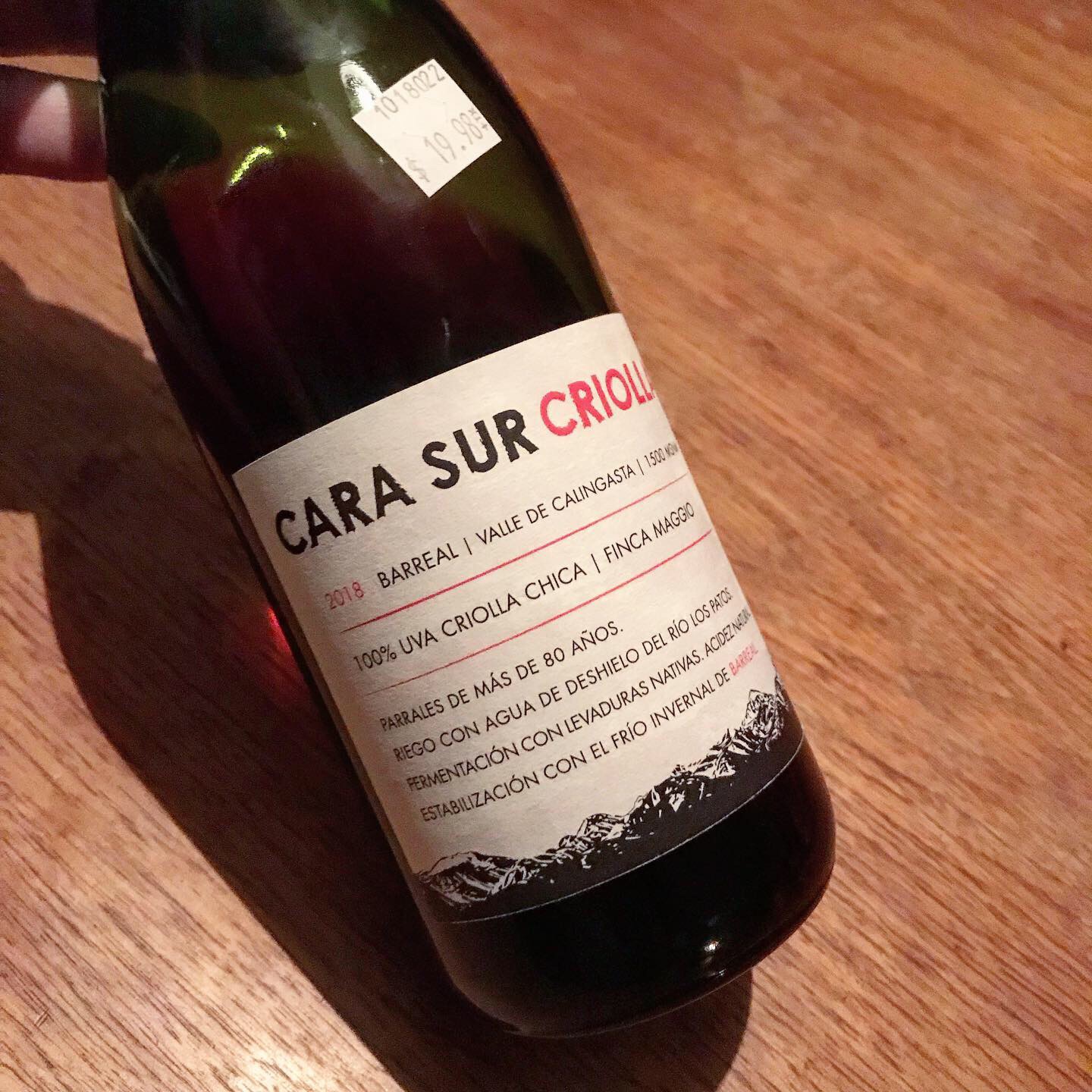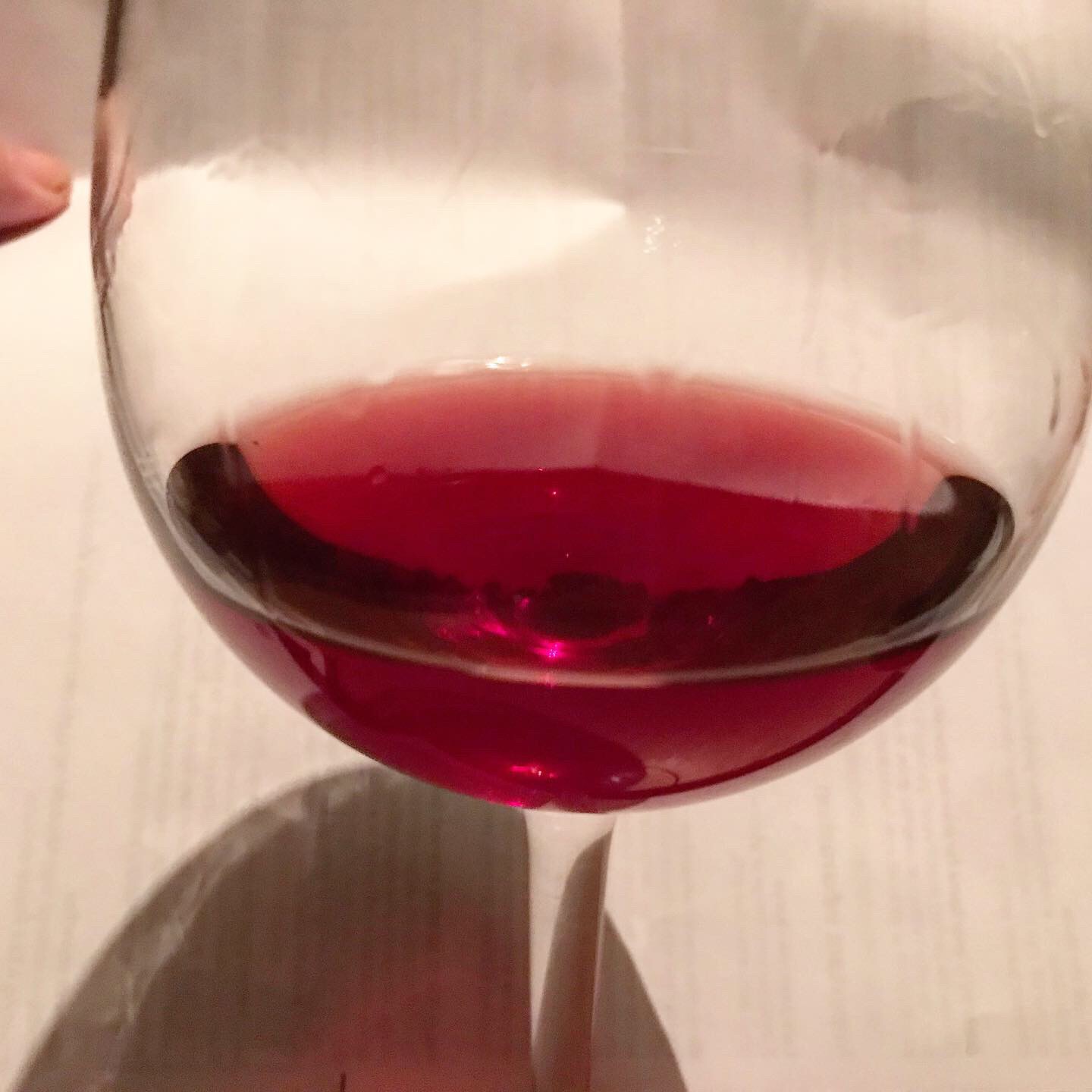Thanks for starting this discussion, Adam!
I’ve liked most of the Mission and País wines I’ve tasted, though I found some of the Luyt and Bichi bottlings - and one or two others from Chile - that I’ve tasted to be excessively bretty. I suppose that the grape variety, with its naturally high pH even at modest brix (at least from my experience), is more susceptible to brett than some other varieties. I have not had a bretty Mission from California, fortunately.
I’ve found Mission and País wines to be highly distinctive - once you’ve tried a couple of them, the aromatics are unmistakable.
Here are a couple of photos from a Mission / País / Angelica tasting a group of us put together at Harrington Wines in early 2016.
The Luyt Pipeño wines were a mixed bag (one corked, one quite bretty with another showing more moderate brett) but the better ones were very nice. The Mission Rosé from Proulx (Westside Paso) was 75% Mission and ok but not very expressive of the varietal character. Thought the Miraflores Mission was showing a bit too much oak. Among the dessert wines, you probably know that the Harbor Mission del Sol is not an Angelica as it was made using a different method. The Picchetti and Miraflores Angelicas were both nice though stylistically somewhat different.
Other Mission and País wines I’ve had include the Garage Wine Co. País from Chile - thought that was quite nice. My favorite from Chile has been the J. Bouchon País Salvaje, from “wild” vines that climb up trees. I’ve tried another one from J. Bouchon called País Viejo that I didn’t think was as good. Of course I’ve had the Mission wines from Harrington and Broc, both of which I like quite a bit. Both are sourced from Somers Vineyard in Lodi, located right in the river bottom of the Mokelumne River - we don’t know how old those vines are.
I mentioned on another thread here that I tasted Raj Parr’s 2018 País (sourced from Deaver Vineyard), which I thought was ok but not a standout. I also mentioned that Dani Rozman of La Onda in the Sierra Foothills has worked with old-vine País and Cinsault from Chile, and I believe he’s continuing to do that (though I think his upcoming Chilean wines will be under a different label). I tasted his 2015 Cinsault–País a few years ago - this was about a 70%/30% blend and was very good. The Pais component was unmistakable and really stood out.
As far as Angelicas, I’ve had some very nice ones from Miraflores and Deaver, both made by Marco Cappelli from the old (planted ~1853) Mission vines at Deaver. I had the opportunity to taste a bunch of Angelica barrel samples with Marco at Miraflores a couple of years ago (notes included here if anyone is interested: Visit to Miraflores Winery, November 2017). I also tasted three Mission dessert wines at Deaver a couple of months ago (notes are included here: Visit to Deaver Vineyards, May 2019). Here’s one of the old Deaver Mission vines:
I’ve have had the Mission Angelica from Galleano in Cucamonga Valley - very nice rendition from a true throwback winery! I tasted the Gypsy Canyon Angelica many years ago and don’t recall much about it other than the crazy expensive price. I’ve also had the Foxen Barberena Vineyard Mission dessert wine - more like a Port-style wine than a true Angelica, fortified partway through fermentation so the RS is about 10% (roughly half of the 2015 Harrington Angelica).
I’m sure I’m forgetting a couple of others that I’ve tried in recent years (I know I’ve had a Listán Prieto but no recollection of the producer) but that’s most of them!
I’ll close with a brief intro I wrote on the Listán Prieto / País / Mission grape variety for my Grape-Nutz write-up on visiting Deaver Vineyards a couple of months ago, for those who are not familiar with the variety.
Mission is the name used and recognized in the United States for a grape variety that originally came from Spain and may well be the first Vitis vinifera variety brought by the Spanish to the Americas. It’s almost certainly the first Vitis vinifera variety that was planted in California, in the late eighteenth century. Known as Listán Prieto in Spain – where it is now rare if not extinct other than in the Canary Islands – the variety may be best known as País, as it is called in Chile.
Mission was commonly planted in California in the first half of the nineteenth century but fell out of favor and was supplanted by other varieties imported from Europe. Little acreage remains in California, but some Mission has continued to be a source of fruit for a few producers who make Angelica, a traditional California style that’s essentially the same as Mistela in Spain or Mistelle in France. Angelica is considered by many to be the first recognized California style of wine, being made by the early nineteenth century and possibly earlier. After pressing, the juice is fortified with brandy at the very beginning of fermentation if not before, so it shares some similarity with Port but is generally sweeter. When barrel-aged – and allowed to oxidize in the traditional fashion – it can take on considerable complexity. In recent years, there has also been a minor revival of Mission as a table wine in California. Recent Mission wines in California as well as País wines in Chile have shown that the variety can make fresh and light reds - certainly nothing profound, but fun, tasty, and distinctive wines nonetheless. So there continues to be a demand for Mission grapes, and that demand may be growing though it remains tiny in comparison with most other varieties.
